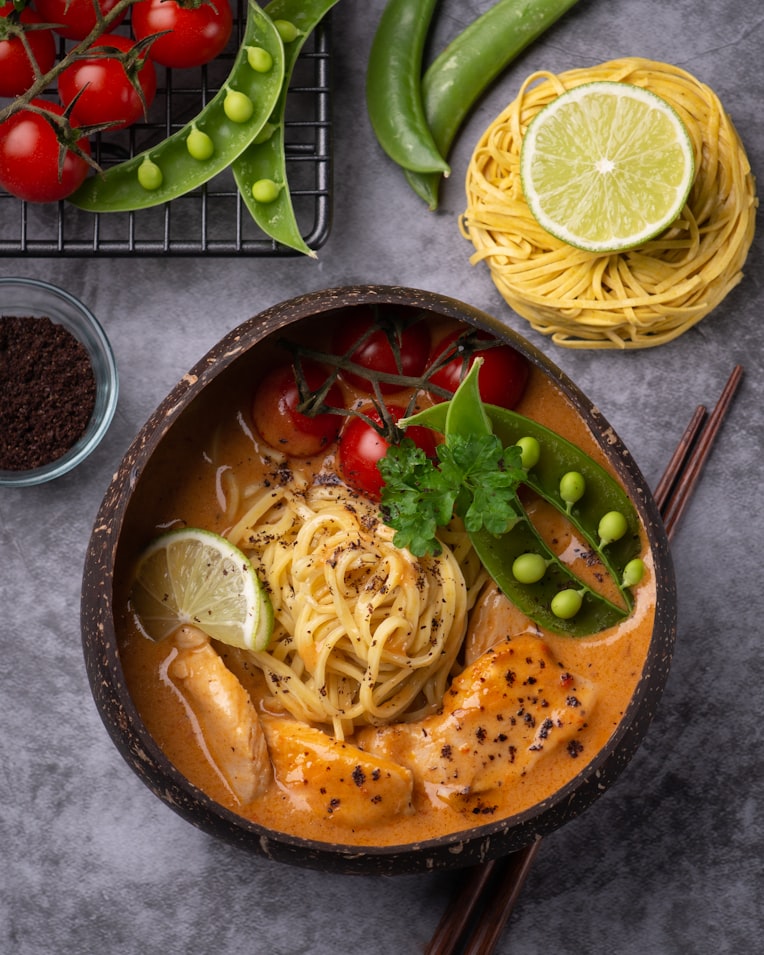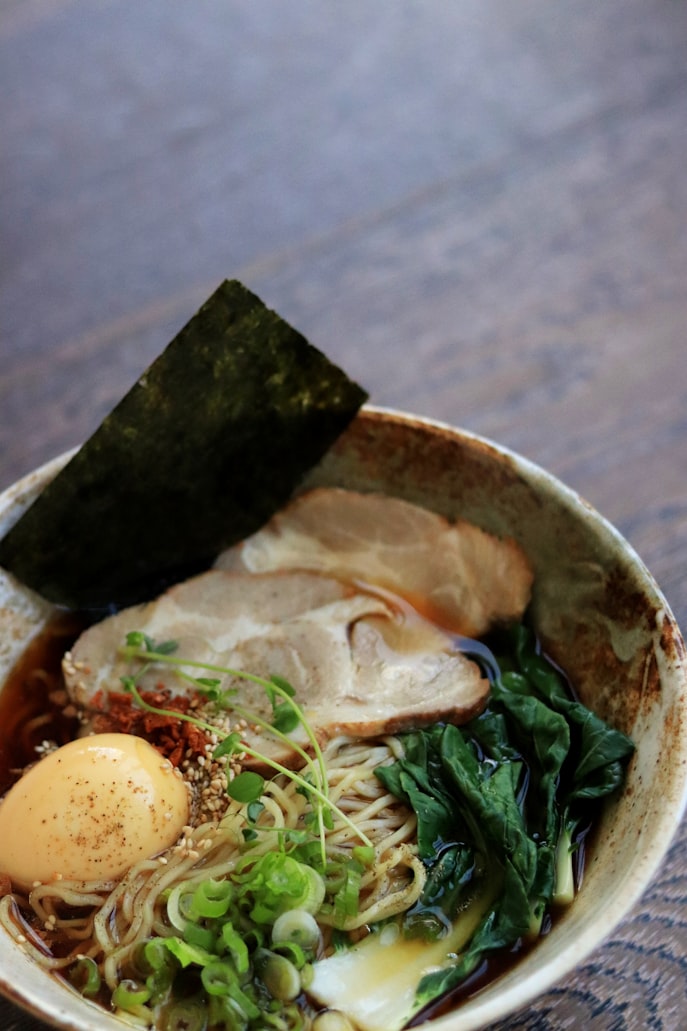4 Easy Solutions for Executive Dysfunction in the Kitchen

Content Warning: This email contains a lot of discussion and images of food, eating, and disordered eating habits. If you suspect you may have an eating disorder that extends beyond your executive dysfunction, or that may be affecting your health, please contact your physician or mental health professional.
A lot of adults deal with executive dysfunction in the kitchen, making it hard to even feed themselves or their families. This has been a big struggle for me which I first noticed in the context of speaking with other people with depression, who would talk about eating mindlessly and to excess when they were feeling depressed, and I recognized the exact opposite in myself. When things get hard, I can’t even bring myself to get up and eat. Sometimes just chewing is exhausting.
Once I had kids, I found that food no longer felt optional, so I was less likely to skip meals altogether, but we have gone through multiple cycles of eating fast food more than daily just in order to get something into their bodies.
Since then, I’ve learned a few tricks to help you save money, time, and mental energy in the kitchen, so it doesn’t feel so hard to eat, and to help keep you from always turning to fast food.
If you're worried about wasting money and/or materials, check out this mini-article about waste in the kitchen here
Mindless Meals
Mindless meals are any meal that you can make on autopilot. They don’t require mental effort for you. They don’t require a recipe for you. In 2020 I started making biscuits and gravy at the beginning of our quarantine here in the US. At the beginning I tried a bunch of recipes and followed them to a T. It was NOT a mindless meal. But since then I’ve made them at least once a month. I know exactly the ingredients I need and the ratios I need them in. It’s officially reached mindless meals status!
Something that might seem really hard to me might be easy for you if you grew up cooking it. Mindless meals don’t have to be two ingredients that take less than 10 minutes to cook (though many of mine are) - it’s ANY meal you can make without thinking too hard about it and without draining your mental energy.
Photo by Natalia Mok on Unsplash
Here’s some of my favorite mindless meals. It’s okay if some of these seem hard to you, and it’s likely you’ll have some ideas right away that I can’t even think of. This is just a jumping off point. Think of it like a word association game and these are just ideas to get your own flowing. Once you have a list of at least 3-5 mindless meals, WRITE THEM DOWN and post them somewhere in the kitchen. The idea is that when you’re thinking “I don’t have the energy to cook” you see this list of things to cook that don’t require the energy.
- Grilled Cheese
- Hamburgers
- Chicken fingers
- Quesadillas
- Pasta + jar or frozen sauce
- Bean burritos
- Eggs and toast
- Antipasti
- Oatmeal
Try to make sure that you keep the ingredients for at least 3 of your meals stocked at all times. We always have bread, cheese, tortillas, eggs so with just those 4 things we have at least 3 meals we can make even easier than we could get food from McDonalds.
Meal Templates
I’m sure you’ve been to one of those places where they have you pick a meal base, add a protein, add toppings, etc… to make your exact meal. I mean it’s every sub shop, and also burrito places like Moe’s or Chipotle, and when I lived in Atlanta there was a pasta place called Figo operating off the same principle. Pick your pasta, your sauce, your toppings.
Photo by Griss Kitchen on Unsplash
Meal templates aren’t new, so why don’t we do them at home? You may even already be doing them in an informal way that uses up a lot more brainpower. Write down the menu then just plug and play with the things you have on hand.
Some things that work great as templates:
- Sandwiches/wraps/burgers
- Burritos/tacos/quesadillas
- Pasta
- Stir fry/curry
- Beans and rice
- Breakfast with eggs
I use a lot of jarred sauces, but when I’m feeling up to a recipe I also like to make some from scratch. Here are some of my favorites:
- Just One Cookbook teriyaki sauce (I love everything she makes)
- Chris's Pueblo green chili sauce (buy hatch chilis in season and make a big pot to freeze and eat all year long)
Freeze Your Leftovers
When you have the mental energy to cook, take advantage of that and make a lot. If your family actually eats leftovers right away that’s great, but if not then put them in the freezer and you suddenly have a healthy, scratch-made one-step meal. This is pretty obvious advice, but many people think that it has to be done as some all-day batch cooking event. It doesn’t.
Freezer meals are perfect for anyone with a standalone freezer, but it’s still an option if all you have is the refrigerator freezer. Save part of your freezer as space for laying freezer meals flat in zipper bags. When it’s full, it’s time to eat them up!
Photo by Jason Leung on Unsplash
The meals won’t always be the same quality as cooked fresh, but for the price they’ll almost always be better than any other single-step meals you can find.
Meals that freeze great and reheat easy:
- Chili
- Rice (rice in the fridge is trash - though it can make good fried rice. Make as much rice as you can in one go and put it in the FREEZER and it reheats perfectly. Check Just One Cookbook for instructions)
- Beans and Rice
- Many soups
- Twice-baked potatoes (tip: freeze before the second baking for the freshest taste or after for faster prep from frozen)
- Al-dente pasta with sauce
- Lasagna
- Enchiladas
- Cookies (not really a meal but make dough into little balls and just toss one or two in the oven when you want a fresh baked cookie)
- Waffles/pancakes
Baby Steps to Home Chef
If you’re eating out a lot then there’s no reason you need to switch to making from scratch meals at home all at once. Follow these baby steps that start off similar in nutrition, cost, and difficulty, but build over time to be something better for your body and wallet without putting strain on you. I recommend increasing your difficulty no more than once a month.
Photo by Cody Chan on Unsplash
1. Replace out food with easy, one step meals at home.
Think microwave meals, ramen, canned soup, etc… Add some baby carrots or other snacking veg. For breakfast eat cereal or a yogurt cup and fruit. This should be faster and physically/mentally/emotionally easier than going out to eat. If it’s not then pare back until it is. Sub mac and cheese in a box with microwavable mac and cheese in a cup. Make it easier to eat at home.
2. Add in just a step or two.
This is the semi-homemade step. Grilled cheese using cheese slices. frozen chicken fingers and fries. Keep your snacking veg. If the dishes are too much, use paper until you can handle washing up.
3. Make one meal a week from a simple recipe.
Use meal templates like the ones I provide to begin with.
From here you can slowly start to add more meals and more complex recipes, but to be honest you may not need to. Of our 21 meals a week, generally around 2 are from out, 10 are one step (almost all breakfast and many lunches), 7 are mindless meals (the rest of lunches and most dinners) and about 2 are from a recipe or template.
It’s not all the healthiest organic nutrient dense plant-based food I could theoretically provide. But remember this: mental health is health too. It’s better for my family for me to keep myself in good mental health by making accommodations for my executive dysfunction in the kitchen. even if it means they eat chicken fingers once or twice a week than it would be for me to tear myself apart trying to make every single meal from whole foods. #noregerts
Shortcuts for Executive Dysfunction in the Kitchen
When you’re really struggling, here are some things you can fall back on to make sure that you stay fed.
- Paper plates
- Precut veg (if fresh prepped produce isn't in the budget, consider frozen instead)
- Prepackaged servings
- Quick-cook grains (grits, oatmeal, rice, etc...)
- Half-microwave your food - if you have a meal that can be cooked in the microwave but is best in the oven, nuke it for a few minutes then switch to the oven to finish cooking - I love this for pot pies that take like an hour to cook a single serving in the oven. Do be careful to still cook fully for food safety.
- Reframe - It’s not just a piece of ham cheese and bread you were too lazy to make into a sandwich. It’s antipasto. It’s deconstructed. It’s fancier than a sandwich. (I love any advice that doesn’t require you to DO anything.)
Sign up for my mailing list for more tools that help you with your executive dysfunction in AND out of the kitchen.
<div class="ml-form-embed"
data-account="3858341:r6o9h5i8l8"
data-form="5633608:m7n3u2">
</div>



